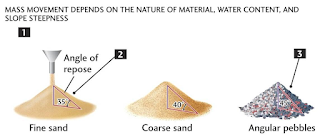Osmotic drug delivery systems
Osmotic drug delivery systems are designed to release drugs in a controlled and predictable manner over an extended period of time. These systems utilize the principle of osmosis to control the rate of drug release.
The basic components of an osmotic drug delivery system include a drug reservoir, a semi-permeable membrane, and an osmotic agent. The drug reservoir contains the drug in a solid or liquid form, and the semi-permeable membrane is designed to allow water to enter and exit the system but not the drug or osmotic agent. The osmotic agent is a soluble compound that creates an osmotic gradient across the semi-permeable membrane, which drives water into the system and pushes the drug out at a controlled rate.
Working principle:
When the osmotic drug delivery system is placed in an aqueous environment, water permeates through the semi-permeable membrane and dissolves the osmotic agent. The dissolved osmotic agent creates an osmotic pressure gradient across the semi-permeable membrane, which draws water into the system.
As the water enters the system, it dissolves the drug, creating a solution or suspension that is released through a small orifice in the membrane at a controlled rate. The rate of drug release is determined by the size of the orifice, the thickness of the membrane, and the concentration of the osmotic agent.
Diagram:
The following diagram illustrates the working principle of an osmotic drug delivery system:
Drug reservoir: contains the drug in a solid or liquid form.
Semi-permeable membrane: allows water to enter and exit the system but not the drug or osmotic agent.
Osmotic agent: creates an osmotic gradient across the semi-permeable membrane, which drives water into the system and pushes the drug out at a controlled rate.
Orifice: the small hole in the membrane through which the drug is released.
Water: permeates through the semi-permeable membrane and dissolves the osmotic agent, creating an osmotic pressure gradient that drives drug release.
In conclusion, osmotic drug delivery systems utilize the principle of osmosis to control the rate of drug release. They consist of a drug reservoir, a semi-permeable membrane, and an osmotic agent that creates an osmotic gradient across the membrane. The water that enters the system dissolves the drug, creating a solution or suspension that is released through a small orifice in the membrane at a controlled rate. The working principle of osmotic drug delivery systems is simple yet effective, making them a popular choice for controlled-release drug formulations.




Comments
Post a Comment